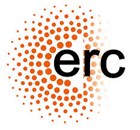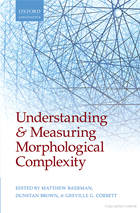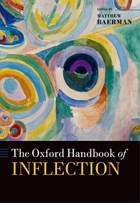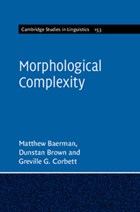Morphological complexity: Typology as a tool for delineating cognitive organization
Conference on Morphological Complexity
The Surrey Morphology Group convened a three-day conference ‘Morphological Complexity’, on 13-15 January 2012 at the British Academy in London. This was part of a larger project funded by the European Research Council (grant ERC-2008-AdG-230268 MORPHOLOGY). Conference organizers were Matthew Baerman, Greville Corbett and Dunstan Brown.
Background
Although inflectional morphology could provide a consistent one-to-one mapping between form and function, it seldom does. Inflectional systems have their own structure which may operate at cross-purposes to the grammatical systems whose realisation is their putative reason for being. For example, words may fall into different inflection classes, as in English, where the past tense of some verbs is formed by a suffix (walked), others by a vowel alternation (sang), without any difference in meaning or function. Or the forms may be syncretic, in that the shape of the paradigm fails to match the feature values, as with the future tense paradigm of French verbs, which conflate two values of person in the singular (e.g. səra ‘you/she will be’) and in the plural (sərõ ‘we/they will be’). Both inflection classes and syncretism make for non-congruence between grammatical meaning and morphological form, and so constitute a kind of uniquely morphological complexity, that is, autonomous morphological structure that must be accounted for in its own right. This complexity is further compounded by the existence of multiple and distributed exponence. For example, in the Chinantecan languages (Oto-Manguean languages of Mexico), subject agreement and TAM marking is expressed, inter alia, by suffixes, tone and stem alternations, each of which falls into separate inflection classes and follows distinct patterns of syncretism.
The consequences of morphological complexity for linguistics in general have long been unappreciated, due in part to the extreme cross-linguistic diversity it manifests. But the last several years have seen a marked increase in scientific activity in this field, as techniques in psycholinguistics, information theory, and morphological and computational analysis have become more sophisticated and nuanced. We therefore convened this conference in order to bring together what might otherwise be scattered lines of research.
Project members
Prof Greville G. Corbett
Dr Matthew Baerman
Prof Dunstan Brown (University of York)
Dr Scott Collier
Dr Maris Camilleri
Period of award:
February 2009 - January 2015
Funder
European Research Council (ERC)
TOP




